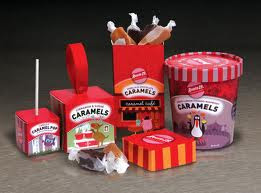

One of the most important things to do to promote your product is to spend extra time and effort on your packaging. Packaging can make or break a buyer's decision as to whether they buy your product or not. There are many product concepts that do not get realized by Major Retailers because of packaging.
If you consider it from a Buyer's point of view, packaging is what a customer notices first when entering into their store. If the packaging isn't attractive or clear, customers won't buy. It's a simple equation. Thus, spending plenty of time on packaging is essential to Major Retail success.
But how do you know if you are on the right track?
These are three great questions to think about when preparing your product's packaging for Major Retail success:
1. Does your packaging convey a clear message of what the product is or does?
If you can't pick up your product in its current packaging and know immediately what it is, then you know you have a problem. There should always be a clear message imparted by your packaging - what it is, what it does, and why it's awesome. It needs to be readable quickly, because customers usually decide within a few seconds as to whether they want to buy your product or not. It's imperative that you create a clear visual experience for the customer as to what the product is and how it can help them.
2. Is the packaging attractive? Does it make the consumer want to buy now?
Remember, beauty is in the eye of the beholder - you may love that kiwifruit green but to someone else it looks like cabbage! If no one else agrees on the attractiveness of your packaging, then you know you have a problem. It needs to be attractive, concise and enticing. How do you know that you are getting it right? By asking people, of course! Ask your friends, family, colleagues, people on the street...ask anyone who will give you an honest answer. Ask them for the truth, not what they think you want to hear. You'll soon appreciate how very honest people can be!
3. Is the package size consistent with its competition?
If your competitors packaging is 3X smaller than your packaging, then you know you have a problem. You've got make sure your product is compatible with how much space a Buyer has to work with. Buyers need to specially layout their space in a store because they are allotted a very limited amount of space for their category. So be sensible, and consider how much room a buyer has to work with before you go for the foot long box.
Even if none of this applies to you, if you are not 100% convinced that you are on the right track with packaging, it's always worth getting some expert advice. Find a company or packaging expert that can advise you specifically about product packaging for your product type. Working with an experience packaging expert can save you many a headache down the road and really help you nail the sales.
www.made-from-india.com maintains a database for manufacturers, exporters, wholesalers, retailers and suppliers of Packaging & Paper Products including hologram, label & tag, packaging materials, paper & pulp, & other HDPE sacks etc.




